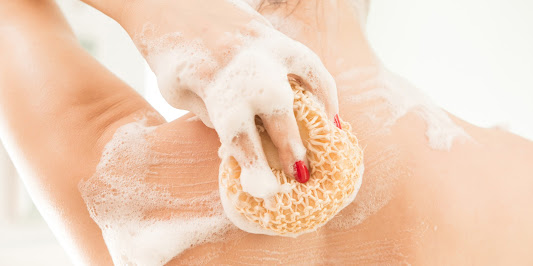Is Triclosan Really THAT bad?
Is Triclosan Really THAT Bad?
Controversies surrounding household chemical, Triclosan, poses many questions for consumers.
The first thought that may be coming to your mind right now is: "what even is Triclosan?" Triclosan is a commonly used household product that is used as an antibacterial agent in various hand soaps, disinfectants, body washes, toothpastes, mouth rinses, and in fabrics to prevent the growth of microbes. Due to the ongoing COVID-19 Pandemic, the use of this chemical has grown drastically over the past year. Triclosan, in its purest form, is a white crystalline powder that is used universally.
What does this mean for you and what are the risks?
The primary risk that has actually been able to be proved through studies is the disruption of natural bacteria in ecosystems due to the presence of Triclosan in waste water. For us, this means that various living organisms can be killed off that are required in order for our ecosystems to function, provide us with clean water, and/or keep us healthy. When Triclosan is released into our water systems, Triclosan kills off the good bacteria that many plants and algae require to function and stay healthy which in turn, can have many negative effects on food production and access to clean water supplies for humans.
Another risk is that in high doses, Triclosan can cause disruption of the thyroid gland which in turn, can cause issues with metabolism, energy levels, and absorption of nutrients into the bloodstream.
One final major concern is the creation of bacterial resistance to antibiotics. The overuse of Triclosan in personal-use products has been linked to mutations in various bacteria causing the creation of superbugs that are resistant to the use of antibiotics.
Should you continue using this product?
Triclosan, like many chemicals, is safe to use in low doses. It is unlikely that you will ever reach the point of ingesting high enough doses for significant effects to harm you. However, the effects that Triclosan has on the environment are significant and should also be considered when choosing whether or not to use products including Triclosan in their ingredient list. Although in 2016, Triclosan was banned from use in foaming handsoaps, Triclosan has continued to be a commonly used product for years in its many alternative forms. The FDA has also claimed that the alternative of using regular soap and water for 20-30 seconds is considered to be just as effective in killing harmful bacteria. Altogether, it is up to you to consider the implications of the use of Triclosan and understand where your priorities lie.
References:
National Center for Biotechnology Information (2021). PubChem Compound Summary for CID 5564, Triclosan. Retrieved March 7th, 2021 from https://pubchem.ncbi.nlm.nih.gov/compound/Triclosan.
Consumer Product Information Database (2021). CPID Information on Triclosan, Retrieved March 6th, 2021 from https://www.whatsinproducts.com/chemicals/view/1/95/003380-34-5/Triclosan
Food and Drug Administration (2021). Federal Agency, 5 Things to Know about Triclosan. Retrieved March 7th, 2021 from https://www.fda.gov/consumers/consumer-updates/5-things-know-about-triclosan
Mighty Nest (2021). The Dangers of Triclosan. Retrieved March 6th, 2021 from https://mightynest.com/learn/research-by-concern/dangers-of-triclosan
Encyclopedia (2021). The Production of Triclosan. Retrieved March 6th, 2021 from https://www.encyclopedia.com/science/academic-and-educational-journals/triclosan
Europa Public Health (2020). Triclosan and Antibiotic Resistance.. Retrieved March 7th, 2021 from https://ec.europa.eu/health/scientific_committees/opinions_layman/triclosan/en/l-3/1-biocides.htm
Science Borealis (2021). Controversial Chemical in Your Soap, Retrieved March 6th, 2021 from https://blog.scienceborealis.ca/triclosan-a-controversial-chemical-in-your-soap/#:~:text=The%20Canadian%20government%20has%20announced,negative%20effect%20on%20aquatic%20organisms



Comments
Post a Comment